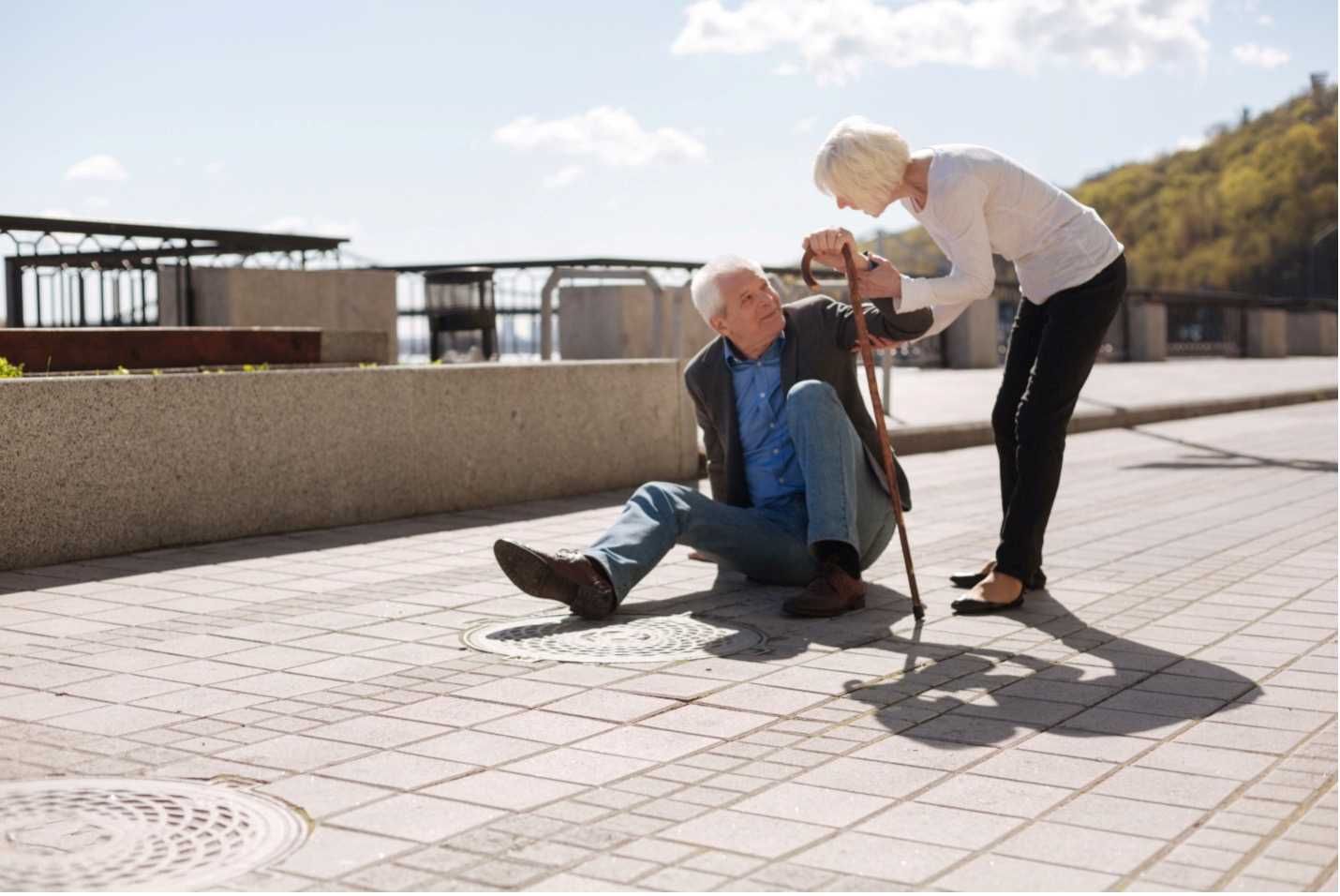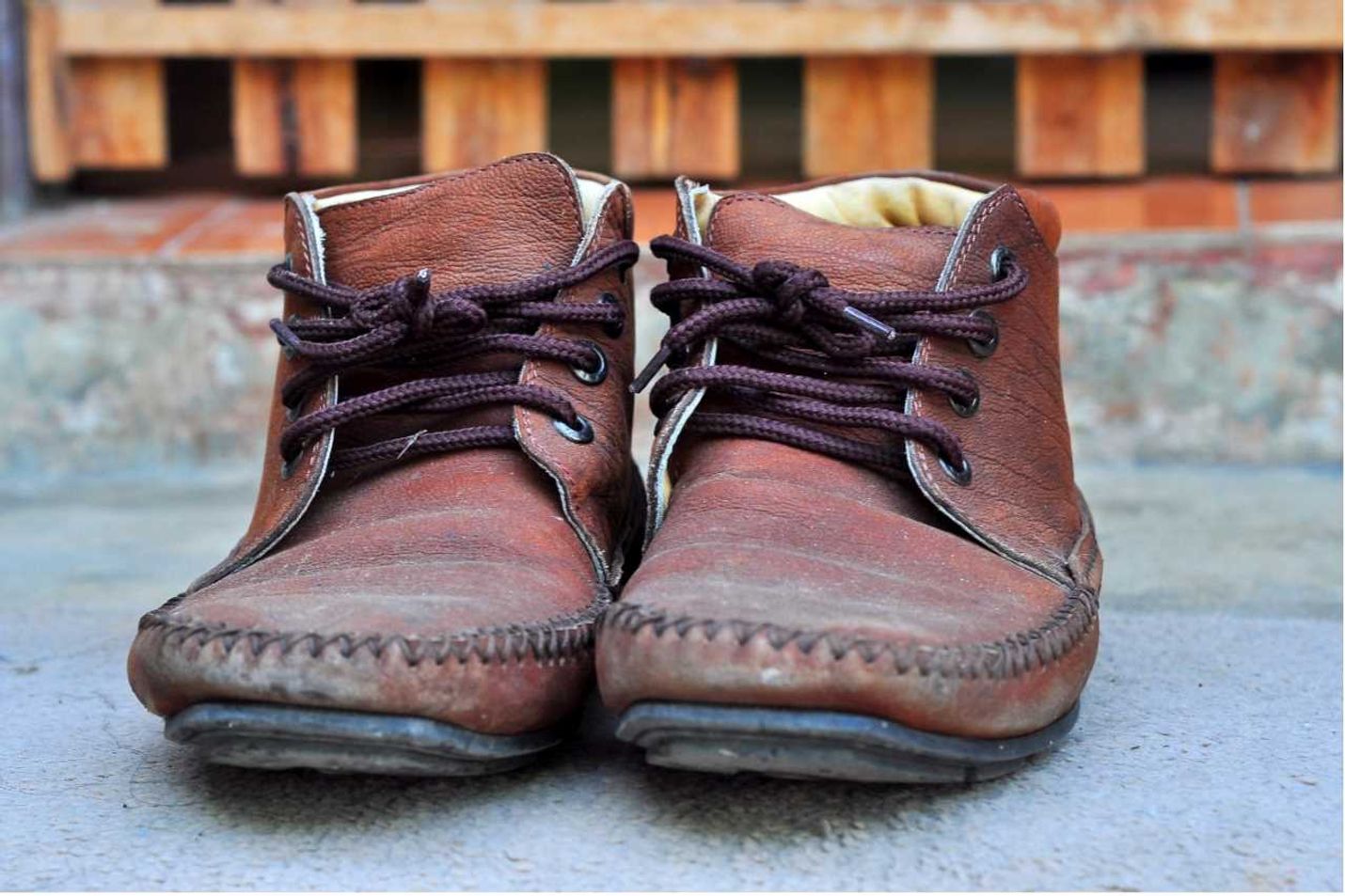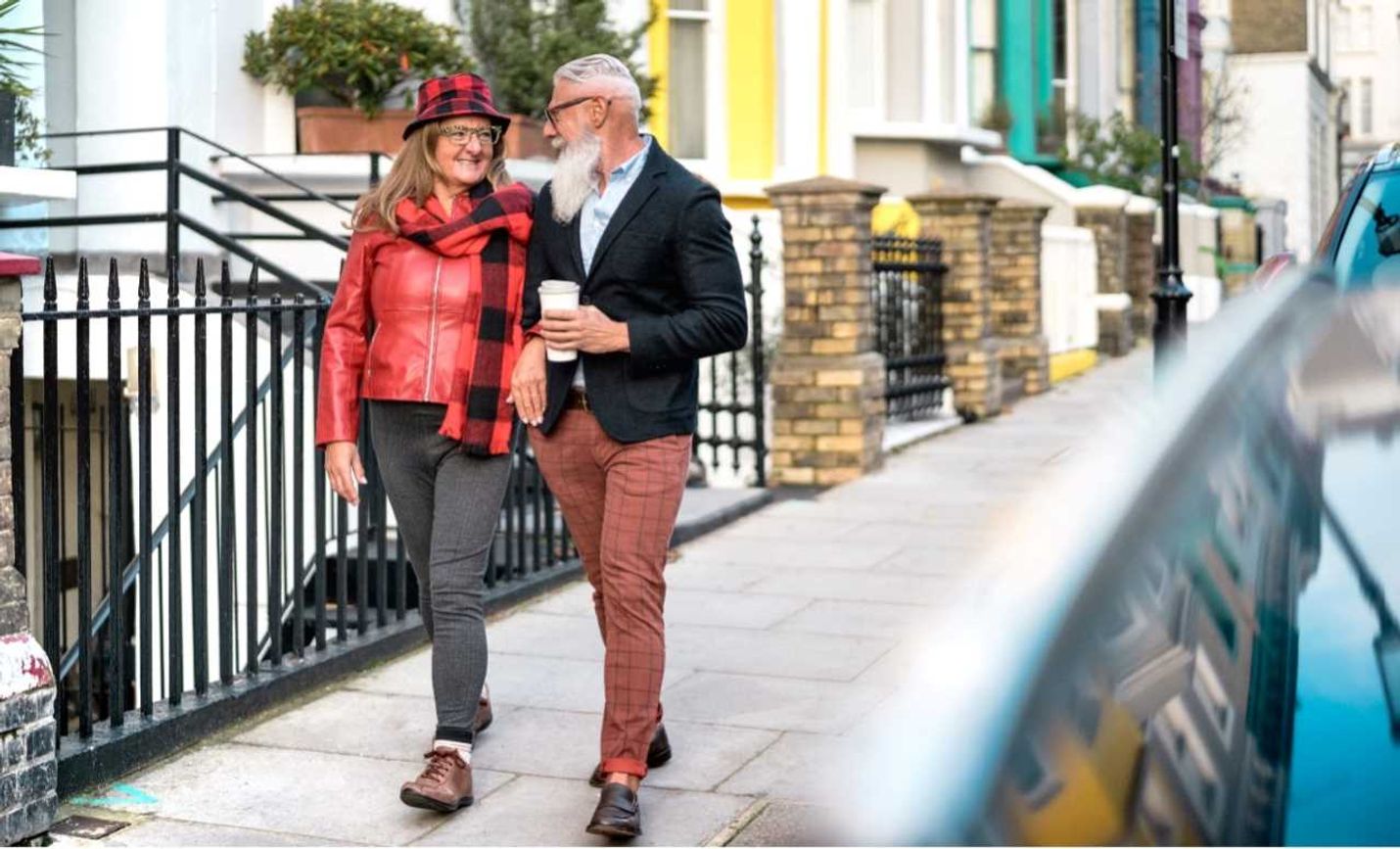A Guide to Choosing the Proper Footwear to Prevent Falls

Introduction
Seniors who are 65 years of age and over often face a silent safety threat, and that threat is accidental falls due to unsafe shoes. In this essential guide, you will learn about why it’s important to choose the proper type of footwear to prevent falls. Understanding how footwear plays a role in falls can be helpful for seniors, caretakers and those who care about senior family members. We are also going to reveal what to look for when choosing safe shoes for seniors, go over the best fall-prevention shoes and share safety tips for preventing falls.
Understanding the Risks of Falls
Research shows that as people grow older, the risk of sustaining a serious injury after a fall greatly increases. And thanks to focused research in this area, it’s now better understood how certain types of footwear can increase the risk of a senior experiencing a fall accident.
According to the National Council on Aging (NCOA), a staggering 36 million older adults experience fall accidents every year. Out of that number, around three million of these seniors end up in the emergency room. Another study shows that between 71% and 87% of seniors suffer from foot disorders requiring frequent medical care.
What are the most common causes of fall injuries?
Age-related changes. As the body ages, there is a tendency for once strong muscles to weaken. Reflexes become slower and some seniors may experience balance issues.
Chronic health conditions. Common health conditions such as diabetes, arthritis, heart disease, Parkinson’s disease and osteoporosis can be major factors in causing foot and balance problems.
Environment. Surfaces that are wet or icy are serious slip-and-fall threats. Older adults may also sustain injuries when tripping over obstacles left on the floor or ground, loose rugs or tears in old carpeting.
Footwear. Certain types of footwear can come with its own risk factors. Wearing footwear that is worn out, for instance, can be highly risky.
Medication Side Effects. Taking medications may cause a person to experience sudden episodes of dizziness, lightheadedness or drowsiness that leads to unsteady walking or falling.
Mental Impairment. An overall decline in mental cognition can affect a person’s ability to prevent falls. Seniors suffering from dementia or Alzheimer’s disease are at greater risk of becoming disoriented, leading to a higher risk of falling.
Vision Problems. A decline in eyesight due to cataracts and other eye issues such as glaucoma and macular degeneration pose a risk factor due to a lack of adequate depth perception.
Any of the above factors can put a senior in a situation where they find themselves losing balance and falling unexpectedly. This is why it’s so important to take steps right now to find good shoes for older adults dealing with balance problems or issues that can cause a loss of balance.

First, let’s quickly review what shoe features are unsafe for seniors to wear while walking indoors or outdoors.
Heels that are too high. Any shoes with heels over one inch are in the risky category.
Soles that are extremely soft or thick. They are not good for stability.
Smooth-soled shoes. These shoes cannot prevent falls because they don’t have any traction, making them dangerous on slippery surfaces.
Worn out soles. They pose the same risk as smooth soles, not enough traction.
Poor fit. The feet are not secure inside the shoes, leading to stability problems.
Fortunately, these problems are easy to avoid when you choose shoes that can help prevent the likelihood of fall injuries.
Factors to Consider When Choosing Shoes
These tips can help you know what to look for when selecting the best fall prevention shoes for seniors.
Fit and Size
How a shoe fits on a foot is extremely important for shoe safety. No longer should seniors even consider wearing shoes that are too roomy, too tight or that cause discomfort or pain when walking.
So, how do you know what the right shoe size is?
Measure the feet. Gather a piece of paper larger than your foot, a pen and measuring tape.
Place the paper on a flat surface next to a wall so it doesn’t move.
Stand on the paper making sure that the heels of both feet are against the wall.
Draw a line at the very tip of your big toe.
Measure the length from the line to the wall and mark the number. This is the length of your foot.
Sit comfortably in a seat and wrap the tape measure around the widest part of one foot. Write down the number of inches.
Now that you have accurate measurements, it’s time to consult a foot size chart with shoe sizes that correspond to those measurements. Please keep in mind that this chart is a basic guideline. Shoe materials, design, width and arch support can vary among shoe brands and styles.
Traction and Slip Resistance
Whether you’re looking for lightweight walking shoes, dress shoes, sandals or slippers for seniors, finding shoes with good traction on the soles is essential for safety.
Non-slip shoes for active seniors can be a lifesaver when preventing tragic injuries from slips and falls. You can tell that a shoe has treading because when you look at its bottom, you can see a tread pattern. This pattern causes the shoe to have enough friction to help someone maintain their balance while walking on smooth or wet surfaces.
You know a pair of shoes has a good tread pattern when you see:
Channels and more. Channels, grooves and multidirectional patterns help create strong gripping action and liquid redirection.
Sipping. These are thin grooves or slits that enhance traction.
Slip-resistant material. The sole of the shoes is made from rubber or another material with superior non-slip properties.
Stability and Support
It is extremely important for seniors to maintain stability while walking. The slightest wobble can cause a senior to lose their balance, and that risk increases for seniors already dealing with balance issues.
There are shoes that account for this and the best brands and styles have built-in stability features that provide a good amount of balance support. When shopping, you want to look for shoes that provide the following type of support.
Ankle Support. Features such as ankle straps or padded ankle collars help keep ankle joints stable.
Heel Collar. There is extra support in the back of the shoe for the heel.
Firm Outsole. Shoes feature outsoles made from a strong, rigid material.
Cushioning and Shock Absorption
Shoes should have adequate cushioning. Many seniors gravitate towards cushioned shoes because they are very comfortable to wear. Cushioning is also great for preventing falls.
Cushioned shoes help with balance by distributing the weight of the foot evenly. Cushioning also protects ankles and foot joints. With every step, the cushion absorbs the shock of the feet hitting the surface, making walking easier on feet, ankles and even knee joints.
Shock-absorbing shoes are made to prevent stress on joints and muscles from the impact from walking, jogging or running.
Shoe manufacturers use various technologies to achieve maximum shock absorption. Here are some technical terms to look for:
Dual-density Foam. The shoes have two different types of foam, usually a softer and harder foam.
Gel Cushioning. These are specially designed capsules, or pockets, filled with gel material that mold to the foot.
EVA. Typically used for the construction of midsoles, this lightweight foam is used in athletic and casual shoes.
PU Foam. Made from polyurethane, this foam is dense and durable
TPU Capsules. These are small capsule units filled with a type of thermoplastic material. Each unit is strategically placed within the midsole.

Shoe Types for Fall Prevention
Knowing what to look for when shopping for the best and safest walking shoes for seniors can make it easier to find the right shoes for everyday wear.
Athletic Shoes
Seniors who enjoy wearing athletic shoes should choose styles that leave enough wiggle room in the toes, plenty of interior and exterior support cushioning and excellent treads.
Seniors active in sports should pay particular attention to shoe categories because athletic shoes are made for specific sports activities, including basketball, golf, hiking, cross-training and tennis.
Walking Shoes
When choosing walking shoes, remember to look for shoes that offer a well-constructed insole and outsole for overall stability. Quality walking shoes have support at the toe and heel, and many styles offer flexible straps for an adjustable fit.
Work Shoes
Key features of safe work shoes include:
- Breathable uppers
- Deep anti-slip grooves
- A high cut for proper ankle support
- Extra-comfortable insole
- Reinforced toe or toecaps
Choosing work shoes that are most appropriate for a specific industry is essential. Shoes worn at a construction job differ from those worn at an office or factory where hazardous chemicals exist.
Additional Tips for Fall Prevention
Preventing falls with footwear requires constant vigilance to ensure seniors remain safe from injuries. The following tips can ensure that safe footwear remains a high priority.
Regular Maintenance and Replacement
Periodically check to see if shoes are still in good condition. Wear and tear can often depend on shoe quality and frequency of use. However, keep in mind that on average, shoes wear out between eight and twelve months of constant use.
Check shoes for typical signs of wear and tear such as worn out treads and damage to the uppers. Make it a habit to replace any shoes showing signs of being worn out as quickly as possible.
Accessories for Enhanced Stability
The regular use of quality shoe accessories can greatly enhance the comfort, durability and safety of shoes.
Examples of useful shoe accessories are:
- Comfort Insoles
- Elastic Shoelaces
- Removable Shoe Cleats
- Shoehorns
- Shoe Stretchers
FAQs
What are the 5 P’s of fall prevention?
Prevention. Assessing all kinds of fall risks and taking steps to prevent them.
Planning. Creating a personalized plan for preventing falls. This can be done with the help of a healthcare professional.
Personalization. Devising fall prevention strategies for individual seniors that pay attention to their lifestyle, mobility issues, health conditions and preferences.
Participation. Activities for seniors that help to improve balance, flexibility and strength.
Promotion. Raising awareness about fall prevention through education, resources and support.
What type of footwear is recommended to reduce fall risk?
The safest footwear choices are well-fitting shoes with heels that are one inch or lower. Shoes with slip-resistant or non-slip soles and shoes with lots of cushioning and shock absorption.
What is unsuitable footwear for patients who are at risk of falls?
Seniors should avoid wearing shoes with thin, hard soles, thick soles that are too soft and shoes that don’t fit properly. They should also stop wearing worn-out shoes with damaged uppers, frayed laces and worn-down treads.
What are 3 common risk factors associated with patient falls?
- Advanced age
- Medication side effects
- Poor lighting

Conclusion
Poor-fitting, unsafe footwear, and other common risk factors greatly increase the likelihood of accidental falls. Seniors can take steps to avoid slip and fall accidents and injuries by taking proactive steps to choose comfortable and safe shoes.
Seniors should opt for shoes with low heels, comfortable cushioning, enhanced support features and good non-slip traction. Shoe accessories are also available for enhanced protection. Additionally, seniors can devise a personalized plan for eliminating the risk of falling.
Fall prevention strategies can begin right away by removing all worn-out and dangerous shoes from the home. These shoes can be replaced by shoe styles with the best safety features for stable walking.
By following these safety tips, seniors can go wherever they wish knowing they’ve done everything possible to remain safely on their feet.